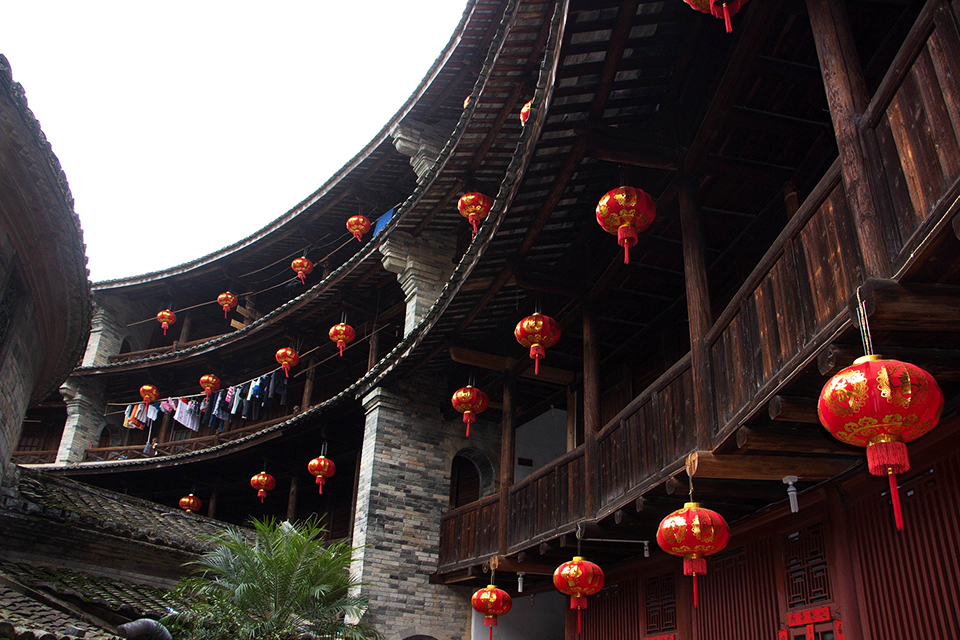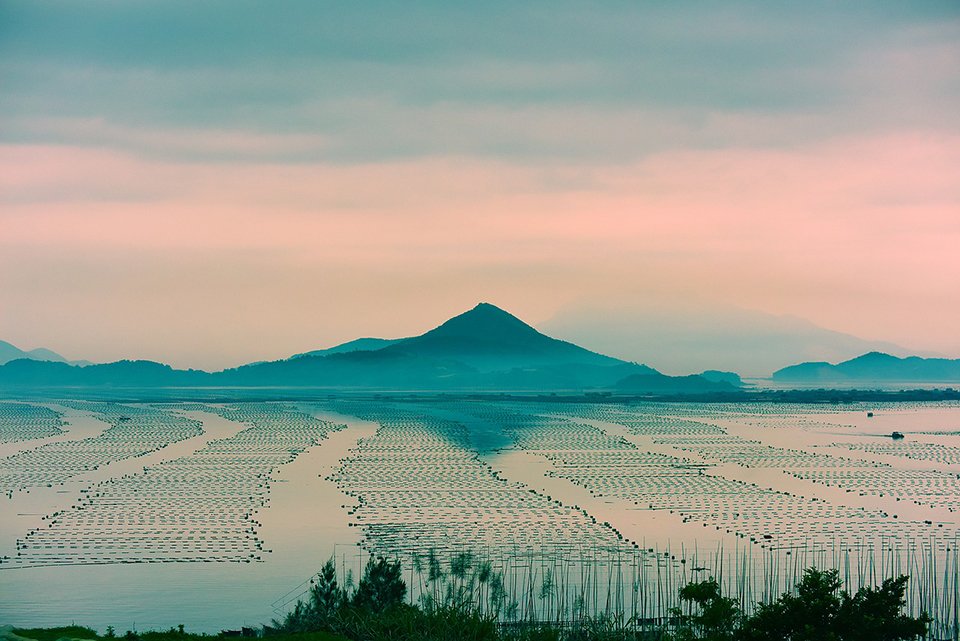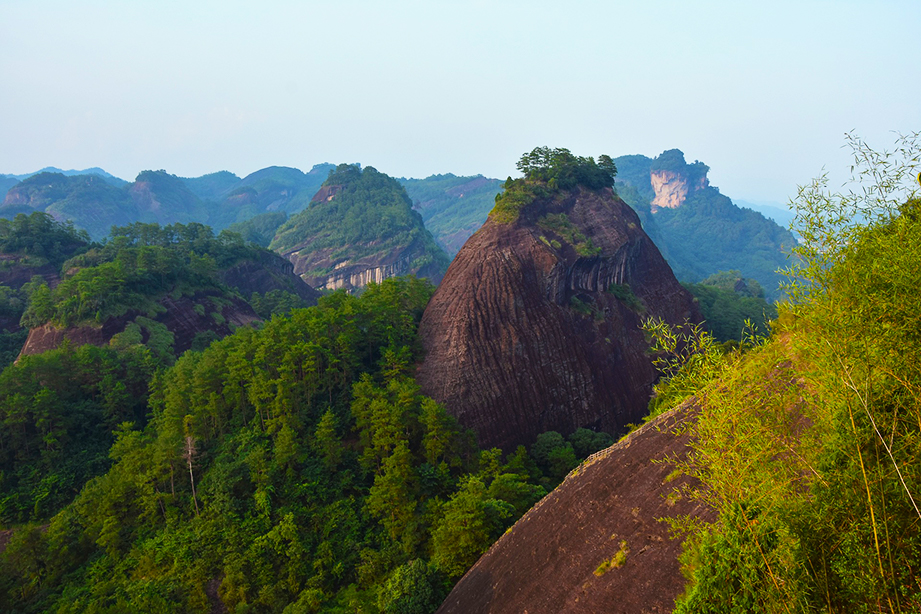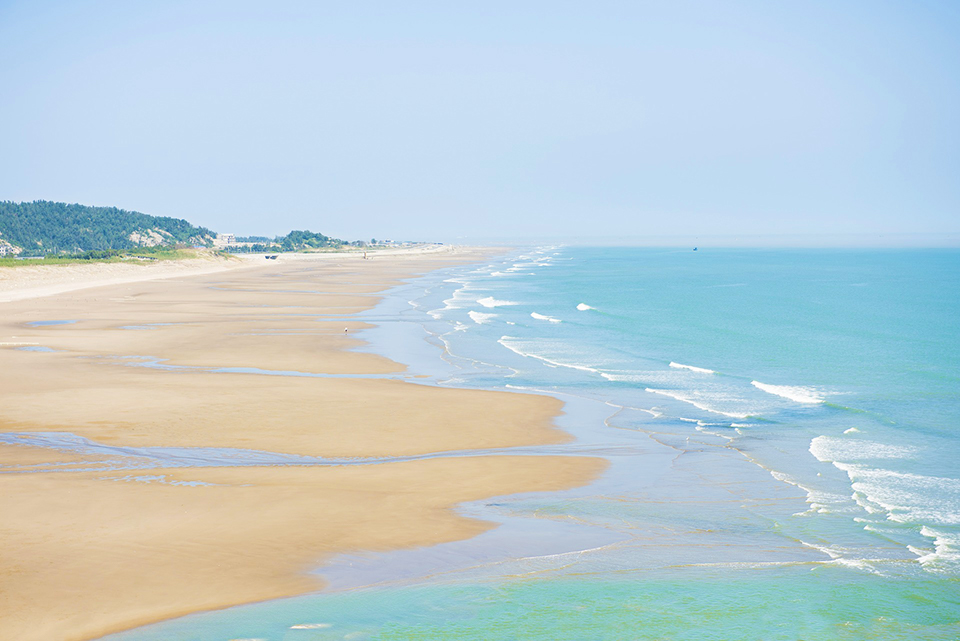



Fujian, formerly romanised as Fukien or Foukien, is a province on the southeast coast of mainland China. Fujian is bordered by Zhejiang to the north, Jiangxi to the west, and Guangdong to the south. Taiwan lies to the south east, across the Taiwan Strait. The name Fujian came from the combination of Fuzhou and Jianzhou (a former name for Jian'ou) two cities in Fujian, during the Tang dynasty. With a Han majority, it is one of the most culturally and linguistically diverse provinces in China.
Most of Fujian is administered by the People's Republic of China. However, the archipelagos of Kinmen, Matsu, and Wuqiu are under the control of the Republic of China. Thus, there are two provinces (in the sense of government organizations): the Fujian Province administered by the People's Republic of China and the Fujian Province of the Republic of China.
The province is mostly mountainous, and is traditionally described to be "Eight parts mountain, one part water, and one part farmland" (八山一水一分田). The northwest is higher in altitude, with the Wuyi Mountains forming the border between Fujian and Jiangxi. It is the most forested provincial level administrative region in China, with a 62.96% forest coverage rate in 2009. The highest point of Fujian is Huanggang Peak in the Wuyi Mountains, with an altitude of 2157 m.
Fujian province faces East China Sea to the east, South China Sea to the south, and the Taiwan Strait to the southeast. The coastline is rugged and has many bays and islands. Major islands include Quemoy (also known as Kinmen) (controlled by the Republic of China), Haitan Island, and Nanri Island. Meizhou Island occupies a central place in the cult of the goddess Matsu, the patron deity of Chinese sailors.
The Min River (闽江) and its tributaries cut through much of northern and central Fujian. Other rivers include the Jin River and the Jiulong River. Due to its uneven topography, Fujian has many cliffs and rapids.
Fujian is separated from Taiwan by the 180 kilometres (110 mi)-wide Taiwan Strait. Some of the small islands in the Taiwan Strait are also part of the province. Small parts of the province, namely the islands of Quemoy and Matsu, are under the administration of the Republic of China.


Geography
The province is mostly mountainous, and is traditionally described to be "Eight parts mountain, one part water, and one part farmland" (八山一水一分田). The northwest is higher in altitude, with the Wuyi Mountains forming the border between Fujian and Jiangxi. It is the most forested provincial level administrative region in China, with a 62.96% forest coverage rate in 2009. The highest point of Fujian is Huanggang Peak in the Wuyi Mountains, with an altitude of 2157 m.
Fujian has a subtropical climate, with mild winters. In January the coastal regions average around 7—10°C (45—50 °F) while the hills average 6—8 °C (43—46 °F). In the summer, temperatures are high, and the province is threatened by typhoons coming in from the Pacific. Average annual precipitation is 1,400—2,000 millimetres (55—79 in).

Culture
Because of its mountainous nature and the numerous waves of migration from central China in the course of history, Fujian is one of the most linguistically diverse places in all Han Chinese areas of China. Local dialects can become unintelligible within 10 kilometres (6.2 mi). This is reflected in the expression that "if you drive five miles in Fujian the culture changes, and if you drive ten miles, the language does". Classification of these various dialects has confounded linguists. In general, most dialects of Fujian are put into a broad Min category, and then subdivided into Min Bei, Min Dong, Min Zhong, Min Nan, Pu Xian, and Shao Jiang. (The seventh subdivision of Min, Qiong Wen, is not spoken in Fujian.) The Fuzhou dialect is part of Min Dong, but some linguists classify it as Min Bei; the Amoy language is part of Min Nan. Hakka, another subdivision of spoken Chinese, is spoken around Longyan by the Hakka people who live there.
As is true of other provinces, the official language in Fujian is Mandarin, which is used for communication between people of different localities.
Several regions of Fujian have their own form of Chinese opera. Minju (Fujian Opera) is popular around Fuzhou; Gaojiaxi around Jinjiang and Quanzhou; Xiangju around Zhangzhou; Fujian Nanqu throughout the south, and Puxianxi around Putian and Xianyou County.
Fujian cuisine, with an emphasis on seafood, is one of the eight great traditions of Chinese cuisine. It is composed of traditions from various regions, including Fuzhou cuisine and Min Nan cuisine. The most prestigious dish is Fotiaoqiang (literally "Buddha jumps over the wall"), a complex dish making use of many ingredients, including shark fin, sea cucumber, abalone, and Shaoxing wine (a form of "Chinese alcoholic beverage").
Many well-known teas originate from Fujian, including oolong, Wuyi Yancha, Lapsang souchong and Fuzhou jasmine tea. Indeed, the tea processing techniques for three major classes tea, namely, oolong, white tea, and black tea were all developed in the province. Fujian tea ceremony is an elaborate way of preparing and serving tea. In fact, the English word "tea" is borrowed from Min nan language. (Mandarin and Cantonese pronounce the word chá.)
Fuzhou bodiless lacquer ware, a noted type of lacquer ware, is noted for using a body of clay and/or plaster to form its shape; the body later removed. Fuzhou is also known for Shoushan stone carvings.